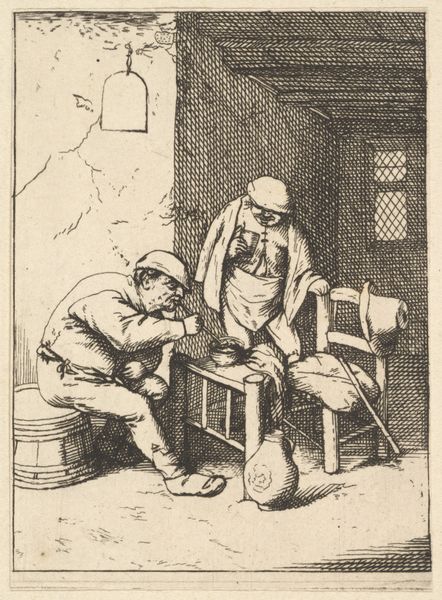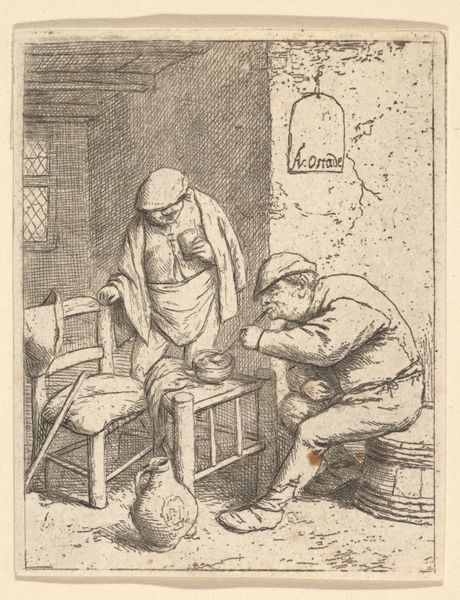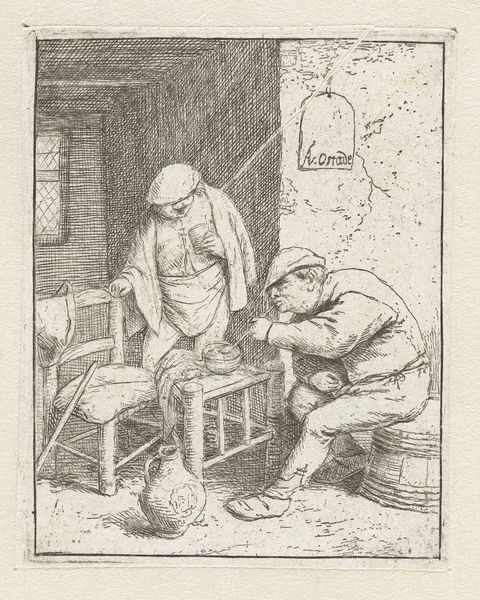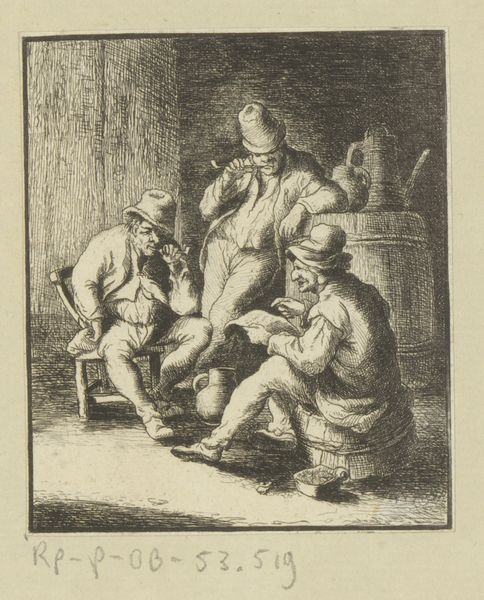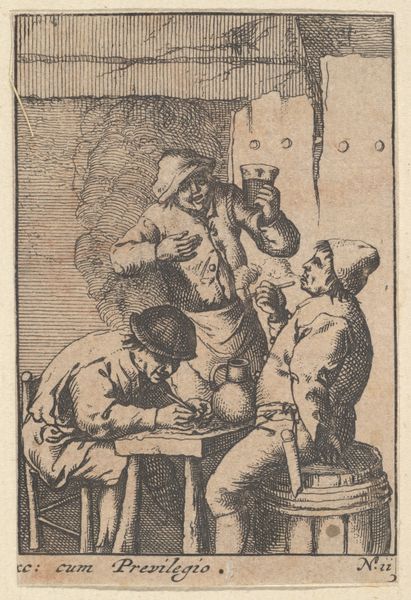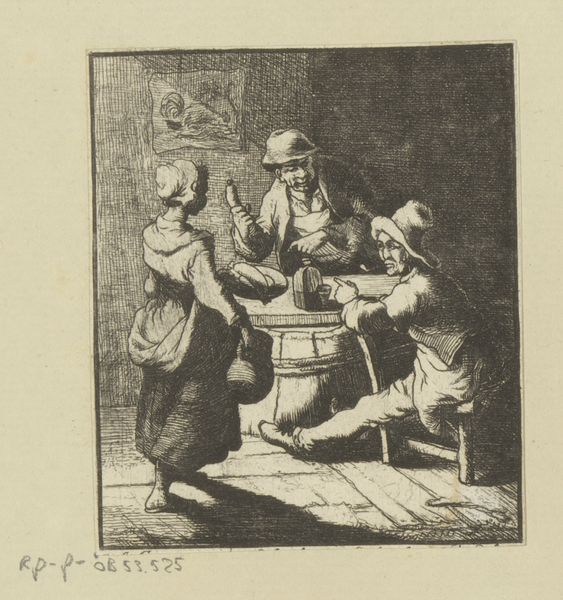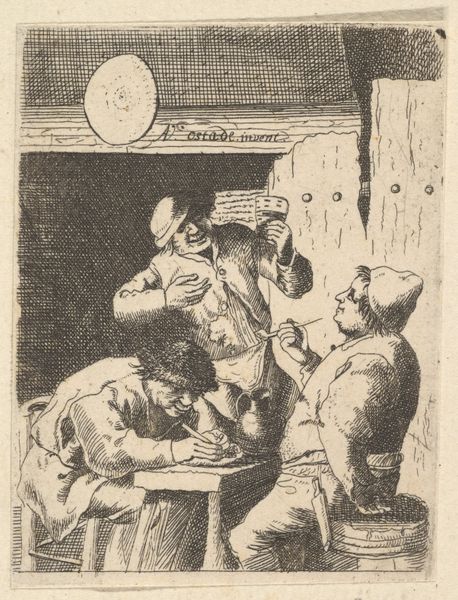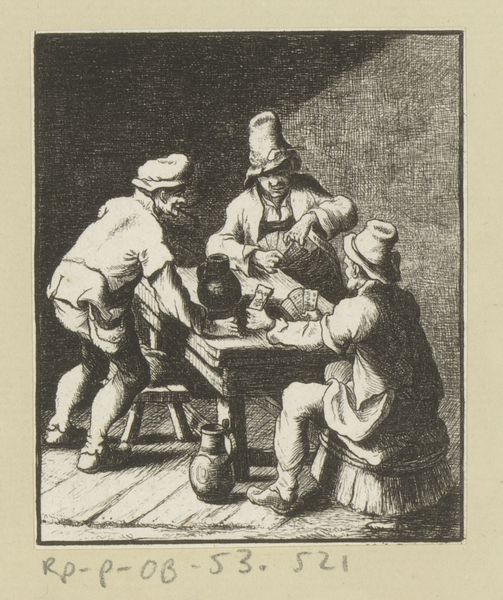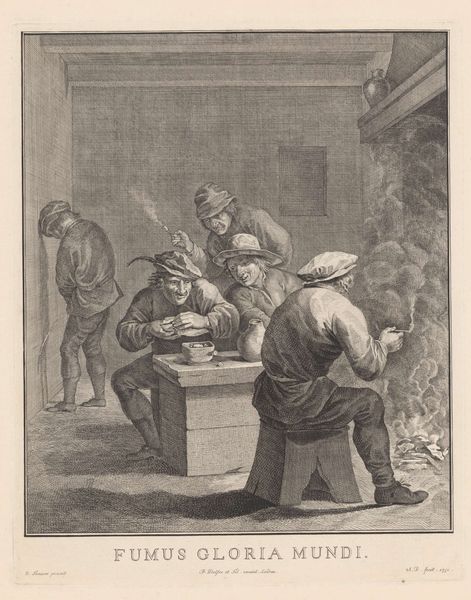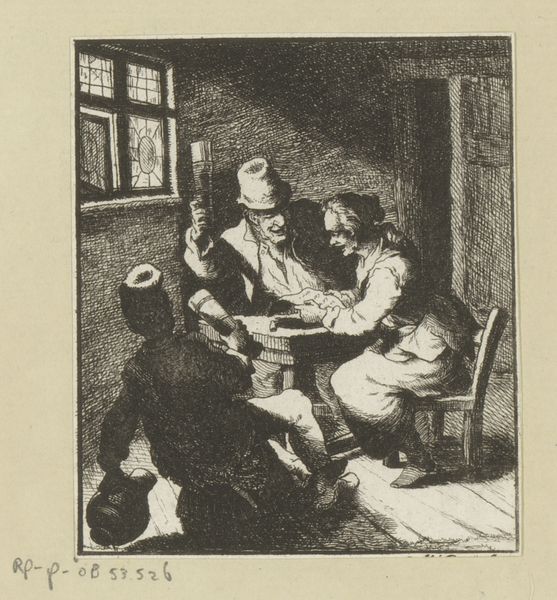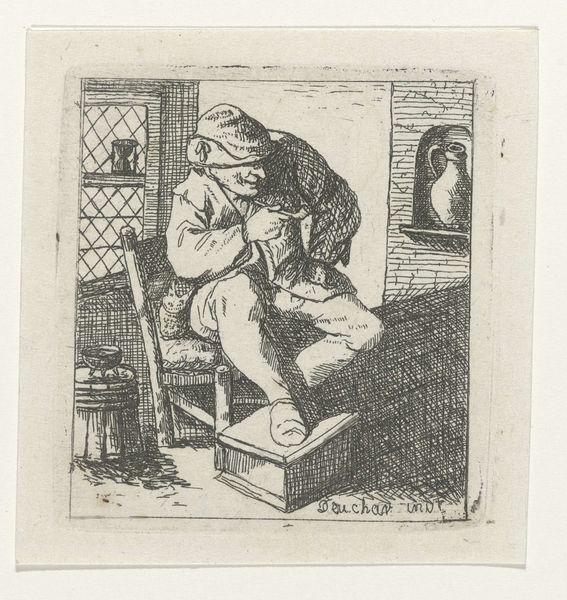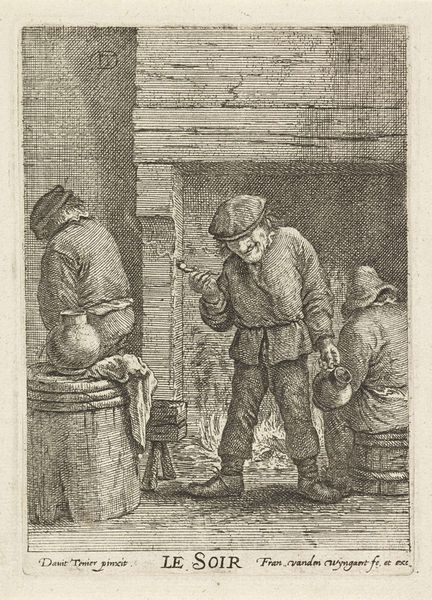
Interieur van een herberg met man die pijp aansteekt en man met glas in zijn hand 1671 - 1745
0:00
0:00
anonymous
Rijksmuseum
print, etching
#
baroque
#
dutch-golden-age
# print
#
etching
#
genre-painting
Dimensions: height 77 mm, width 65 mm
Copyright: Rijks Museum: Open Domain
Curator: Welcome! We're standing before a print titled "Interieur van een herberg met man die pijp aansteekt en man met glas in zijn hand," or "Interior of a Tavern with a Man Lighting His Pipe and a Man with a Glass in His Hand," made anonymously sometime between 1671 and 1745. Editor: My initial reaction? The texture is quite remarkable! Look at how the engraver uses dense, short strokes to suggest deep shadow and a feeling of cramped space. The scene is gritty and close. Curator: It's a small etching, a print, and what’s remarkable is the level of detail achieved. You can really see the labor involved in its making, consider what this image might suggest about leisure and labor during the Dutch Golden Age. Taverns like this were places where people, mostly men it appears, could consume alcohol and socialize, but also served as sites for conducting business and exchanging news. Editor: The composition certainly contributes to that atmosphere. Notice how the figures are arranged – one hunched over, engaged with his pipe, the other passively holding his glass. There's a real sense of stasis. The dark etching enhances the drama through intense tonal contrasts. Curator: It also brings attention to their clothes. Working-class men. Not a single elegant fabric in sight. Notice the roughspun garments, evidence of everyday labor reflected in how clothing, drink, and tobacco shaped social experience for ordinary people in the Dutch Republic. What is more interesting to consider is what that might reveal to us, through its status as print, about the circulation and audience of this genre scene. Editor: It’s all line and form, isn’t it? Observe how that cage-like structure suspended on the wall, in contrast with its surroundings, helps convey the sense of interiority but also draws attention through its angular sharpness to the man on the right, whose back creates an abrupt vertical edge within this crowded scene. Curator: You see a cage, I see the tavern's crude advertisement! These humble spaces are easily overlooked in history. Etchings like this serve to show how people made and circulated knowledge, represented through very tactile, material processes, revealing the way individuals accessed, produced, and exchanged different forms of visual culture at different times. Editor: A fascinating intersection of formal qualities and social context! I leave appreciating not just its aesthetics but the artist’s process and social realities. Curator: Indeed! Seeing the connections between the materiality, technique, and historical context is a great way to understand Dutch society at the time!
Comments
No comments
Be the first to comment and join the conversation on the ultimate creative platform.
